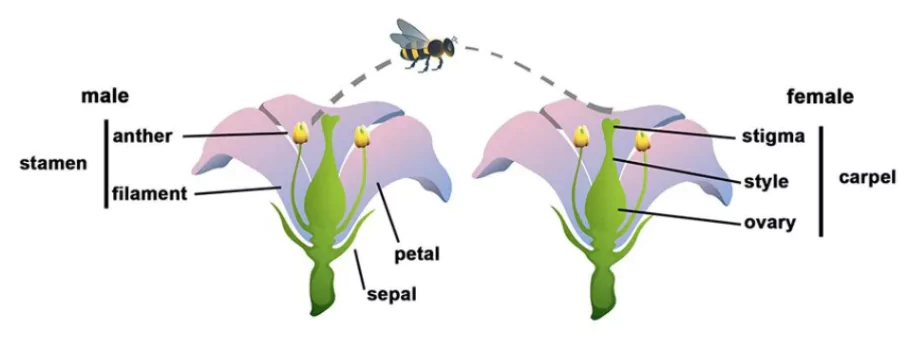Recently, a study published in the journal Nature Communications found that bees and other beneficial bugs are disproportionately harmed by air pollution compared to crop-destroying pests.
- The study found that pollinators including bees and some moths and butterflies experienced a 39% decline in foraging efficiency after being exposed to elevated air pollution levels, while plant-eating aphids and other pests were not significantly impacted.
Crucial Insights on the Recent Study of the Journal Nature Communications
Following are the inference of the recently published study:
- Disruptions of Scent-based Communication: The beneficial insects such as bees and wasps are more affected by air pollution due to their reliance on scent-based communication.
- Air pollutants can chemically alter these scent trails or interfere with insects’ ability to detect them, essentially disrupting their sensory landscape.
- Many beneficial insects use airborne chemical signals to locate flowers, find mates, or hunt their prey.
- Impact on Behaviour and Biological Aspects: Air pollution impacts various insect behaviour and biological aspects, including feeding, growth, survival, reproduction, and ability to locate food sources.
- Of all these factors, insects’ ability to find food was most severely impaired by air pollution, declining by about one-third on average.
- Harmful Pollutant: Among air pollutants, ozone emerged as particularly harmful to beneficial insects, reducing their ability to thrive and carry out their roles in the ecosystem by 35%.
- Ozone pollution has the most detrimental impacts and even low ozone levels below current air quality standards can cause significant damage.
- Nitrogen oxides also substantially impaired beneficial insects.
- Impact on Invertebrates: Changes in invertebrate performance are not dependent on air pollutant concentrations, indicating that even low levels of pollution are damaging.
- Predicted increases in tropospheric ozone could result in unintended consequences to global invertebrate populations and their valuable ecological services.
Enroll now for UPSC Online Course
About Invertebrates
- Refers: Cold-blooded animals with no backbone.
- Habitat: Invertebrates can live on land like insects, spiders, and worms or in water.
- Marine invertebrates include crustaceans (such as crabs and lobsters), mollusks (such as squids and clams), and coral.
About Pollination and Pollinators

- Refers: Pollination is the transfer of pollen from the male structures (anthers) of flowers to the female structures (stigmas) of the same flower or another flower, leading to fertilization and the production of seeds.
- Types: It is of two types:
-
- Self-Pollination: Transfer of pollen grains within the same flower or another flower of the same plant.
- Cross-Pollination: Transfer of pollen grains to flower of a different plant of the same kind.
- Pollinators: These are agents that facilitate pollination.
- Abiotic: Wind and water
- Biotic: Common pollinators include bees, butterflies, moths, beetles, birds, and mammals like bats.
|
![]() 16 Jul 2024
16 Jul 2024
